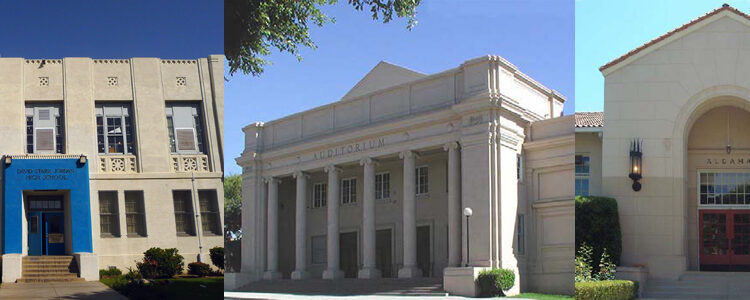
LAUSD Historic Context Statement
With nearly 800 campuses and a geographic span of over 700 square miles, the Los Angeles Unified School District (LAUSD) is the second-largest public school system in the United States.
Since its founding in 1872, the district has commissioned, designed, and acquired a remarkable collection of buildings, campuses, and facilities.
They range from small nineteenth-century schoolhouses to modern campuses spanning several acres. And they reflect more than a century of social, architectural, and technological advances, as well as ongoing educational and curricular reform.
Despite this wealth of historically significant schools, LAUSD has long lacked a consistent framework for understanding, evaluating, and caring for these properties. Existing surveys and context statements were at least a decade old, and they were woefully inadequate in addressing the massive wave of school construction in the region after World War II.
In 2013, LAUSD commissioned a new Historic Context Statement in anticipation of district-wide modernization and redevelopment efforts. A new context statement would help LAUSD better understand its architectural heritage by explaining the evolution of school design in the district, basic architectural styles used in school facilities over time, and how the district’s architectural history relates to that of educational facilities nationwide.
On a very practical level, the document would help LAUSD evaluate its properties for potential landmark designation and help the district comply with the California Environmental Quality Act (CEQA), an important preservation tool that requires agencies to consider the impacts of proposed projects on their historic resources. The new LAUSD Historic Context Statement does all this and more.
It tells the story of the Los Angeles Unified School District—which, given its long history, geographical span, and range of property types, is also the story of American school design and reform in the twentieth century.
Spanning the early 1870s to 1969, the new Historic Context Statement follows the National Register of Historic Places Multiple Property Documentation format, the gold standard for this type of resource. It describes the evolution of school design in the district in the context of historic themes, geographic areas, and chronological periods.
Eras and themes include the district’s founding years, the Progressive Education Movement of the early twentieth century, the era of reform following the Great Depression and the 1933 Long Beach Earthquake, postwar expansion, and the Civil Rights Movement.
The study also documents master architects of LAUSD schools and the typical architectural styles of LAUSD schools. To complement the work of SurveyLA (L.A.’s citywide survey of historic resources), the Historic Context Statement reflects and draws on the basic structure of context, themes, and property types used in SurveyLA for institutional architecture in Los Angeles.
This project created a framework for evaluating Los Angeles’ public schools at a critical time in the district’s history, earning a Conservancy Preservation Award in 2015. It represents a sea change for LAUSD in embracing its historic schools and seeking to understand its rich architectural heritage.
In the vast and complex environment of LAUSD, the Historic Context Statement will help guide the stewardship of some of our most important buildings. Because of the high degree of standardization in school curricula and facilities design—particularly during the postwar period—the document also provides a model for evaluating school facilities throughout California and beyond.
The project earned a Conservancy Preservation Award in 2015.